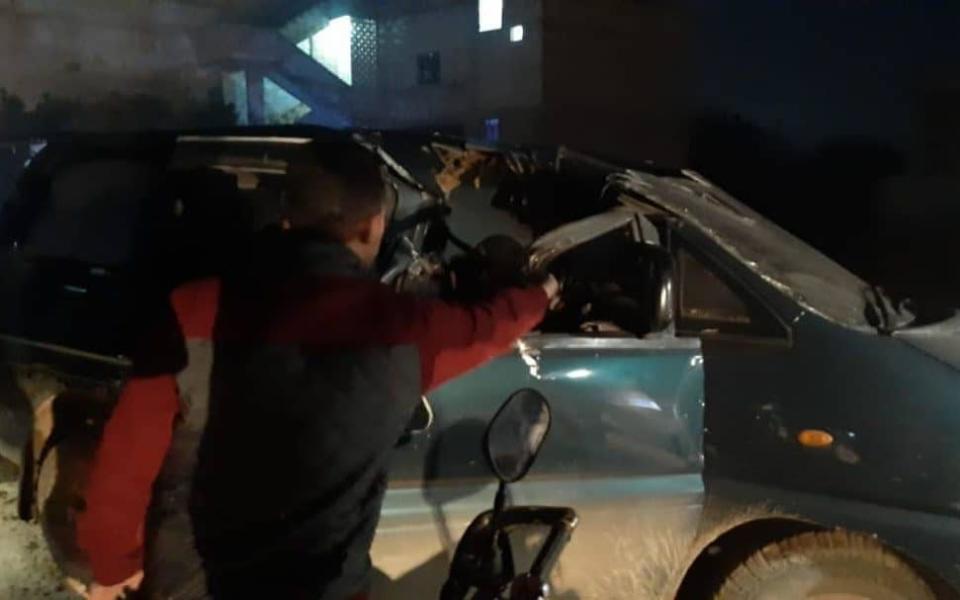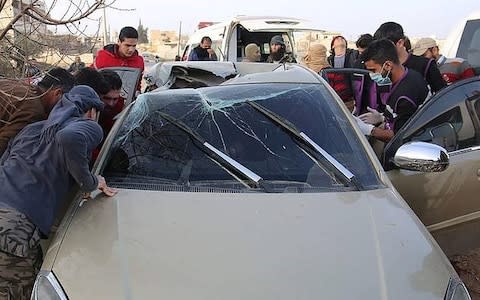US forces kill jihadist leader in Syria with precision 'ninja' missile that chops up targets with blades

US forces are thought to have killed a senior jihadist leader in northern Syria using a rarely deployed “Ninja” missile which attacks targets with precision sword-like blades.
The Hellfire missile, or AGM-114R9X, which has a set of six folding blades instead of a warhead for minimum collateral damage, is believed to have been used to take out a commander in the al-Qaeda offshoot Hayat Tahrir Al Sham (HTS) in the province of Idlib.
The leader, named locally by his nom-de-guerre Abu Ahmad al-Muhajir, was reported to have been killed on Tuesday night when the car he was travelling in was hit by missiles in the town of Atmeh near the Turkish border, 10 miles from the US raid that killed Islamic State leader Abu Bakr al-Baghdadi last month.
He was said to be a high-profile foreign trainer of an elite force within HTS, known as "The Red Bands". Another, unidentified fighter who had been in car was also killed.
This fragment is reported to have been found at the site of what may have been an RX9 (Hellfire with frikken swords) strike.
If you looks closely, you can see what appear to be hinges, as well as being and twisted projections from those hinges.
H/T @obretix, who found this. pic.twitter.com/db7ZOE6S1x— Nick Waters (@N_Waters89) December 4, 2019
Images of the scene shared on social media show a hole in the driver’s seat of the Mutsubishi Delica, which is otherwise largely intact. Inside the car, flesh and blood can be seen and a number of large identical cut marks.
Experts point to the windows, which have not been blown out, as evidence the “Ninja” or so-called “flying Ginsu” was used.
The missile has only been deployed on a handful of occasions in the eight-year conflict in Syria, with at least one other reported use in the killing of Abu Khayr al-Masri, the deputy leader of al-Qaeda, in February 2017.
Masri was killed while driving a car in al-Mastouma, 30 miles south of Atmeh, in Idlib.
US unmanned aircraft, such as MQ-9 Reapers, can carry Hellfire missiles and are known to carry out targeted strikes.
The missile has various pros and cons; while its precision helps to minimise the risk of civilian casualties, it relies on detailed intelligence that requires a lot of human resources.
Nick Waters, a former infantry officer and investigator at Bellingcat who analysed pictures from the scene, said he could clearly see four cuts in the roof, one in the windscreen and one through the door: “you’ve got six: the same number of blades an R9X has,” he said.

"This strike is very distinctive and although the coalition have denied carrying it out, it is possible that other US agencies not under the control of the coalition, such as the CIA, may have carried out this strike unilaterally,” he told the Telegraph.
The US-led coalition said it did not carry out the strike. The Telegraph approached US Central Command (CENTCOM) for comment.
The US has focused on targeting Isil leaders in northern Syria and has largely avoided HTS in Idlib in the northwest. The Islamist group rules control most of the province, pushing out more moderate groups who had previously been dominant.
It would be the first US strike on an HTS leader since 2017.
The skies above Idlib are crowded as the Syrian government and its Russian allies carry out an offensive to regain the last-remaining rebel stronghold in the country.
